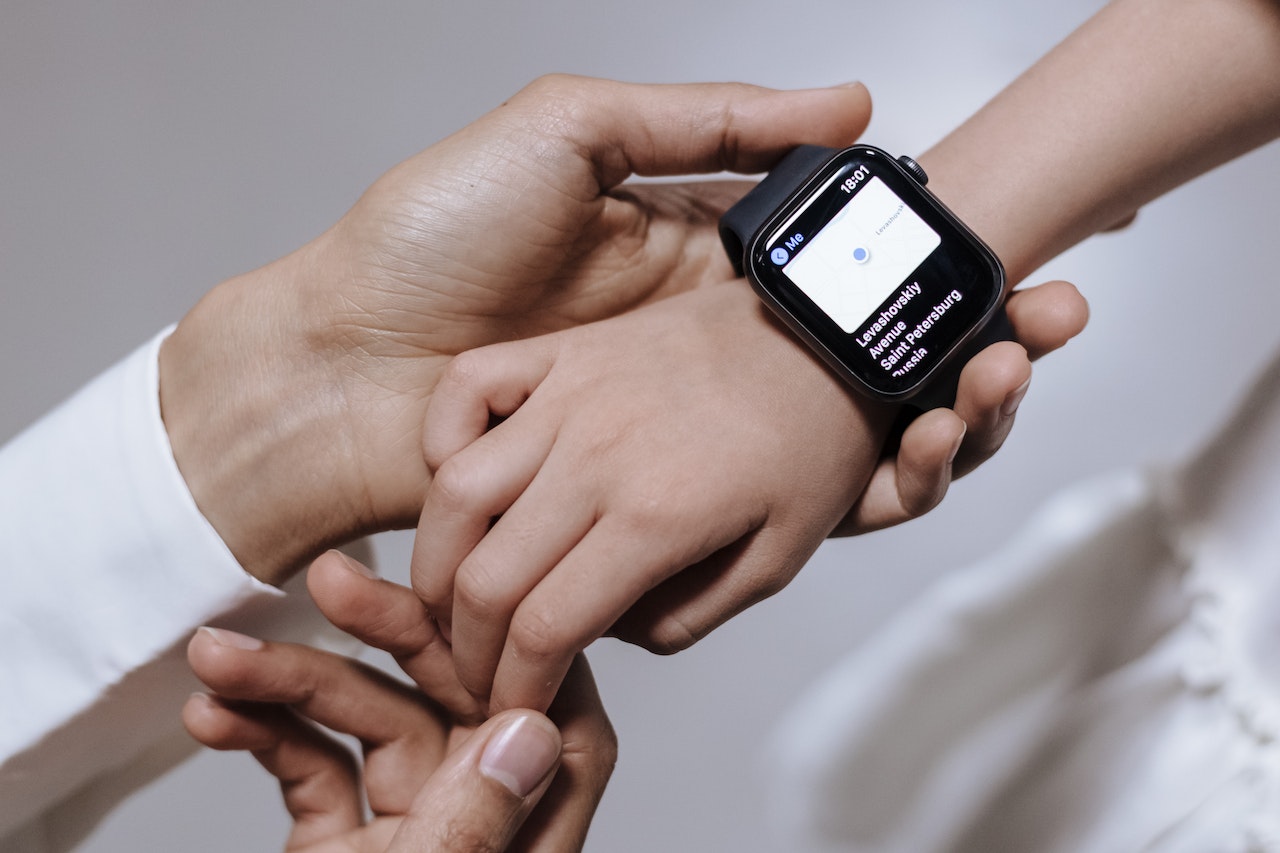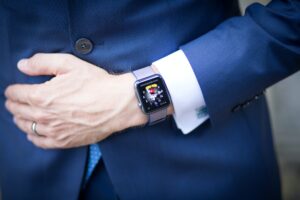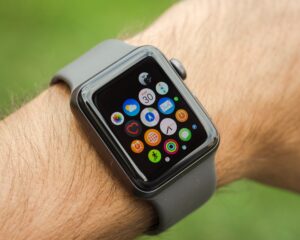Table of Contents
I. Introduction
A. Brief Explanation of Smartwatches for Kids
Smartwatches for kids are wearable devices specifically designed to cater to the needs of young users, offering a range of features beyond just telling time. These devices are equipped with functionalities that provide safety, communication, education, and more, making them more than just accessories—they’re tools for parents to enhance their children’s well-being.
B. Importance of Considering a Smartwatch for Your Child
In today’s fast-paced world, staying connected with your child is paramount. Smartwatches provide an innovative way to bridge the gap between maintaining communication and ensuring their safety, especially when they’re not within your immediate reach. These devices can empower kids with a sense of responsibility and technological familiarity while granting parents peace of mind.
C. Overview of What the Guide Will Cover
This comprehensive guide is designed to walk parents through the multifaceted world of kids’ smartwatches. It delves into the advantages these devices bring, their potential drawbacks, and how to make informed decisions when choosing one for your child. From highlighting safety features to addressing privacy concerns, this guide aims to equip parents with the knowledge they need to navigate this technology wisely.
II. Benefits of Smartwatches for Kids
A. Safety and Communication
GPS Tracking for Real-time Location Monitoring
Smartwatches equipped with GPS technology enable parents to track their child’s whereabouts in real-time. This feature is invaluable, providing a sense of security by allowing parents to know their child’s location when they’re away from home. Whether they’re at school, a friend’s house, or an extracurricular activity, parents can stay informed.
Two-Way Communication for Constant Connection
These smartwatches facilitate direct communication between parents and children. Through calls or messages, parents can check in with their kids, offer guidance, or provide reassurance. This fosters a stronger connection, even when physical proximity isn’t possible, ensuring that children feel supported and connected at all times.
B. Emergency Assistance
SOS Button Functionality for Distress Signals
Smartwatches often feature a dedicated SOS button that, when pressed, sends out an immediate distress signal to pre-configured emergency contacts. This quick and straightforward action can be a lifeline in critical situations, allowing children to call for help when they’re in distress or danger.
Automated Alerts for Parents or Guardians
Parents can set up automated alerts that notify them if their child activates the SOS feature. This ensures that parents are promptly informed of any emergencies, enabling them to respond swiftly and appropriately. This feature can offer a great deal of peace of mind, particularly during times when children are independent and away from direct supervision.
C. Educational Features
Interactive Learning Apps for Engaging Education
Smartwatches often come with interactive educational apps that make learning enjoyable for kids. These apps cover a range of subjects, helping children develop cognitive skills while having fun with their device.
Language Development Tools for Enhanced Communication Skills
Language development tools, such as language learning games and vocabulary-building exercises, contribute to your child’s linguistic abilities. This can lead to improved communication skills and a broader vocabulary, setting a strong foundation for academic success.
D. Health and Fitness Tracking
Step Count and Physical Activity Monitoring
Encouraging an active lifestyle, smartwatches track your child’s steps and physical activity throughout the day. This promotes physical fitness and helps kids cultivate healthy habits from a young age.
Hydration and Movement Reminders for Healthier Habits
Some smartwatches provide reminders for drinking water and taking short breaks to move around. These reminders are essential in teaching kids about the importance of staying hydrated and avoiding prolonged periods of inactivity.
E. Parental Control and Monitoring
App and Contact Restrictions for Controlled Interaction
Parents can manage the apps their child has access to, ensuring that the content is appropriate and safe. Additionally, they can control who can communicate with their child through the smartwatch, giving them greater control over their child’s interactions.
Setting Up Safe Zones for Boundaries
Smartwatches equipped with geofencing technology allow parents to define safe zones for their child. If the child ventures beyond these boundaries, parents receive alerts, helping them keep track of their child’s movements and ensuring their safety.
III. Choosing the Right Smartwatch
A. Age Appropriateness
Consider the Child’s Age and Maturity When exploring smartwatch options, take your child’s age and maturity into account. Younger children might require simpler interfaces, while older kids could handle more complex features. The watch’s ease of use should match your child’s comfort level with technology.
B. Features
List of Desirable Features Based on Needs Create a list of features that align with your family’s needs and goals. This could include GPS tracking, communication capabilities, educational apps, health monitoring, and more. Tailor the selection to what you believe will provide the most benefit to your child.
Prioritise Safety and Communication Features Safety and communication should be paramount when selecting a smartwatch for your child. Features like GPS tracking, two-way communication, and emergency assistance functionalities ensure you can always stay connected and respond swiftly in case of need.
C. Compatibility
Compatibility with Parent’s Smartphone Ensure that the chosen smartwatch is compatible with the smartphone you, as a parent, use. Compatibility enables smooth synchronisation between devices, allowing you to manage and monitor the smartwatch effectively.
D. Battery Life
Importance of Longer Battery Life Longer battery life is crucial for a child’s smartwatch to remain operational throughout the day. It prevents interruptions and ensures that the watch is functional when your child needs it, especially during school hours or outdoor activities.
Average Battery Life to Expect On average, most kids’ smartwatches offer a battery life of [X] hours or days, depending on usage patterns and features. It’s essential to choose a watch that aligns with your child’s routine and activities.
E. Durability and Design
Sturdy Materials for Active Kids Kids are known for their energetic activities. Opt for a smartwatch constructed from sturdy materials that can withstand the rough-and-tumble nature of a child’s day. This durability prolongs the lifespan of the device.
Customizable Designs and Straps Many smartwatches come with customizable designs and interchangeable straps. Allowing your child to personalise their watch fosters a sense of ownership and makes wearing the device more enjoyable.
IV. Privacy and Security Considerations
A. Data Collection and Sharing
Understand What Data the Smartwatch Collects It’s essential to be aware of the type of data that the smartwatch collects from your child’s usage. This could include location data, communication logs, usage patterns, and more. Understanding this information helps you maintain a clear picture of your child’s interactions with the device.
How Data Is Shared and Stored Investigate how the collected data is shared and stored by the smartwatch manufacturer. Ensure that you are comfortable with their data handling practices. Prioritise brands and devices that offer transparent information about data sharing and storage, prioritising those that respect user privacy.
B. Encryption and Security Measures
Ensuring Data Protection Verify that the smartwatch employs robust encryption methods to protect the data transmitted between the watch and your smartphone. Encryption ensures that sensitive information remains confidential and secure from potential threats.
Secure Login and Access Protocols Choose a smartwatch that offers secure login mechanisms and access protocols. This could involve passwords, PIN codes, or biometric authentication methods. These measures prevent unauthorised access to the watch’s features and the data it contains.
V. Setting Up and Using the Smartwatch
A. Initial Setup
Pairing with Parent’s Smartphone Begin by pairing the smartwatch with your smartphone using the manufacturer’s provided instructions. This connection allows seamless communication and data synchronisation between the two devices.
Installing Required Apps Install any necessary applications on your smartphone that are required for managing the smartwatch. These apps typically provide settings, controls, and communication functionalities for the watch.
B. Adding Contacts
How to Add Authorised Contacts Add trusted contacts to the smartwatch, usually through the paired smartphone’s app. These contacts are often pre-approved individuals with whom your child can communicate safely.
Managing Contact List Over Time Regularly review and update the list of authorised contacts. As your child’s circle of contacts evolves, you can ensure that they can only communicate with individuals you consider appropriate.
C. Safety Settings
Setting Up Safe Zones and Geofencing Utilise the smartwatch’s geofencing feature to define safe zones, such as your home, school, or other trusted locations. You’ll receive alerts if your child leaves or enters these areas, helping you keep track of their movements.
Activating the SOS Feature Ensure that your child understands how to activate the SOS feature in case of emergencies. This function often involves holding down a dedicated button to send alerts to predefined emergency contacts.
D. Teaching Your Child
Explaining Basic Functions to the Child Spends time with your child to explain how the smartwatch works. Cover essential functions like answering calls, sending messages, using the SOS feature, and navigating the watch’s interface.
Educating About Responsible Usage Teach your child about responsible smartwatch usage. This includes emphasising that the device should not be a distraction during school hours, encouraging them to use it only when necessary, and educating them about online safety.
VI. Addressing Concerns
A. Screen Time Management
Setting Usage Limits Implement screen time limits on the smartwatch to ensure that it doesn’t dominate your child’s day. This helps maintain a healthy balance between using the watch and engaging in other activities, such as outdoor play, reading, or homework.
Balancing Screen Time with Other Activities Encourage your child to diversify their activities. Promote a mix of physical, creative, and educational pursuits, ensuring that the smartwatch doesn’t replace other essential developmental experiences.
B. Cybersecurity
Teaching Your Child About Online Safety Educate your child about the importance of online safety. Explain concepts like not interacting with strangers online, recognizing potentially harmful content, and seeking your guidance if they encounter anything uncomfortable.
Avoiding Sharing Personal Information Emphasise the significance of not sharing personal information, like their full name, address, or school, with anyone they communicate with through the smartwatch. Reinforce that personal details should only be shared with trusted individuals.
C. Monitoring vs Trust
Finding the Right Balance Between Supervision and Independence Strive for a balance between monitoring your child’s activities on the smartwatch and allowing them a sense of independence. Gradually increase trust and autonomy as your child demonstrates responsible usage and understanding of safety measures.
Building Trust Through Open Communication Foster trust by maintaining open communication with your child. Encourage them to share their experiences, challenges, and questions related to the smartwatch. When they feel heard and understood, they’re more likely to follow safety guidelines.
VII. Reviews and Recommendations
A. Popular Smartwatch Brands for Kids
Highlighting Reputable Brands Consider well-known and reputable smartwatch brands that specialise in kid-friendly devices. Brands with a track record of producing reliable and secure products are more likely to provide a positive experience for your child.
B. Customer Reviews
Checking for User Feedback and Experiences Read customer reviews and testimonials about specific smartwatches. Hearing from other parents and users can provide valuable insights into the real-world performance and features of the watch, helping you make an informed decision.
C. Expert Recommendations
Consulting Tech Experts or Parenting Websites Seek advice from tech experts and parenting websites that have reviewed and evaluated kids’ smartwatches. These sources often provide detailed analysis, pros and cons, and recommendations based on their expertise.
Navigate the world of kids’ smartwatches armed with knowledge, making choices that prioritise your child’s safety, well-being, and responsible technology usage.





